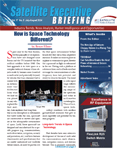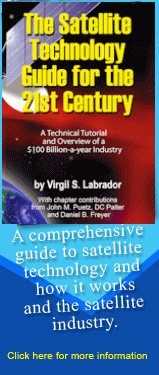Increased Adoption of Earth Observation Data Across the Region Could Contribute an Additional US$100 Billion to Southeast Asia’s GDP by 2030
Singapore, February 11, 2025 – Organised by Singapore Space & Technology Ltd, the Global Space Technology Convention and Exhibition (GSTCE), returns for its 17th edition with a bold new identity and expanded vision. Formerly the Global Space and Technology Convention (GSTC), one of GSTCE 2025’s key highlights is the launch of “Space to Thrive: Southeast Asia’s Space Industry on the Rise”, a comprehensive deep dive into the commercial opportunities of space and its contribution to economies in Southeast Asia, co-authored by Deloitte and Singapore Space & Technology Ltd.
This landmark report reveals that increasing the adoption of earth observation data across the region has the potential to contribute an additional US $100 billion to Southeast Asia’s GDP cumulatively from 2023 to 2030.
The report provides critical insights into the wide-ranging applications of space technologies across sectors such as agriculture, sustainable finance, smart cities, and disaster monitoring. It also emphasises the role of space as an enabler for non-space industries, opening new commercial opportunities for businesses to leverage space-driven innovations.
"The space economy is a frontier of unparalleled potential, and Southeast Asia’s unique characteristics make it a hub for transformative applications of space technologies. Our three-year collaboration with SSTL underscores Deloitte’s commitment to unlocking the region’s potential by bridging insights with actionable innovation to accelerate the opportunities that the space industry offers," said Eugene Ho, CEO, Deloitte Southeast Asia.
This year’s theme, “Commercialising Space – New Frontiers in Disruptive Innovation”, underscores the transformative potential of space as a key economic driver. While the space industry has been growing at a healthy clip in the last few years with decreasing launch costs and advancements in satellite technology, the pace of commercial activity is set to increase even further.
The key driver for this is how space is increasing its contribution as a horizontal technology, spurring innovation in vast sectors including energy; climate technology; supply chain and transport; financial services; and agriculture.
Japan as Featured Country at GSTCE 2025
Underscoring the importance of GSTC as a commercial platform and a gateway for strategic partnerships, Japan joins GSTCE 2025 as Featured Country this year, following its 1 trillion-yen (US$6.2 billion) Space Strategy Fund commitment to advancing its space industry. Japan’s presence highlights its leadership in global space initiatives and underscores the value of global partnership for space economy.
From Japan, JAXA delegation led by President Yamakawa will participate, along with many other Japanese companies, including Archeda, Arkedge Space, Digital Blast, ispace, Mitsubishi Electric Corporation (MELCO), Pale Blue, Satellite Sta Services (SDS), SKY Perfect JSAT, Synspective and Space One. A Space Innovation and Financing Workshop will be held at GSTCE 2025, where participants from Japan, Singapore and other countries will explore the possibility of business collaboration.
Japan’s pavilion at the exhibition will feature cutting-edge technologies, research, and insights from its thriving space ecosystem. Within the pavilion are advanced earth observation, satellite communications, innovative propulsion systems and lunar robotic exploration, including ispace, Synspective, Mitsubishi, Pale Blue and Sky Perfect JSAT. Top panels with industry leaders will explore themes such as public-private partnerships, advancements in satellite technology, and the economic impact of Japan’s space investments.
Overwhelming response from the international business community underscores the growing economic impact of space
GSTCE 2025 sees strong participation from the global space community with country pavilions from Italy, India and South Africa, in addition to JAXA’s country pavilion on the exhibition floor. The exhibition has more than doubled in size, growing from over 20 exhibitors in previous editions to 60 exhibitors from 15 countries in this edition.
Yet another highlight is the Singapore pavilion that has also doubled the size of its predecessor in 2024, featuring 16 Singapore-based space companies, ranging from well-established players with over two decades of experience to cutting-edge startups that have launched technologies that support global space missions.
Running in parallel to the exhibition is a full two-day conference of high-level conference panels and workshops led by global industry luminaries that cut across 10 industry sectors from finance, aviation and maritime to GenAI and robotics. Reflecting the increasing relevance of space across different sectors, the conference and workshop themes cover the impact of space on the maritime industry, supply chain sector, communications, security and climate tech.
The Global Space Technology Convention and Exhibition (GSTCE) 2025 will be held from 26th – 27th February 2025 at the Sands Expo and Convention Centre, Marina Bay Sands, Singapore. Visit https://space.org.sg/gstce/ for more information.






